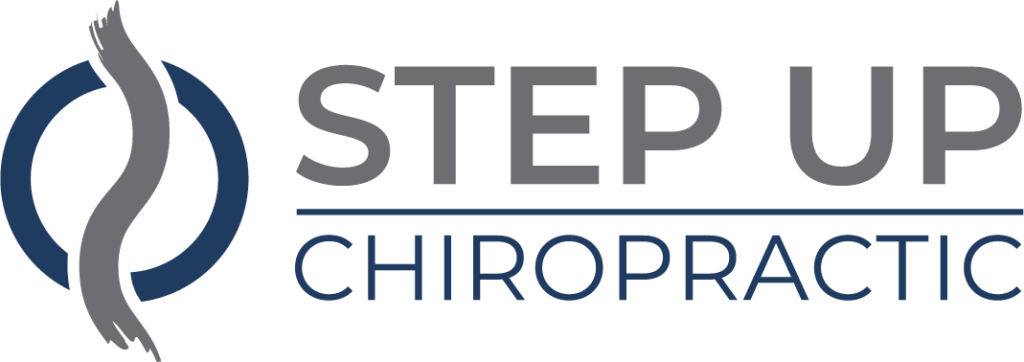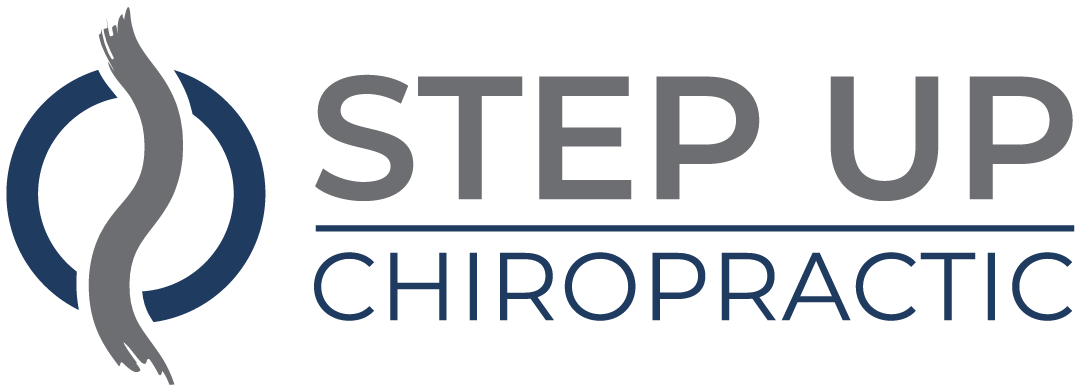To maximize your athletic performance, it's vital to recognize the power of adjustments in your training regimen. You might find that small tweaks in your routine—whether through refined goal-setting, nutritional changes, or mental strategies—can lead to significant improvements. It's not just about pushing harder; it's about training smarter and adapting to what your body needs. By understanding the nuances of periodization and recovery, you can set yourself up for success. But what specific adjustments could make the biggest difference for you?
Importance of Adjustments
When it comes to maximizing athletic performance, making adjustments is important. You can't simply rely on your current routine or skills; you need to evaluate your performance regularly and adapt to what you discover. This means being open to changes, whether in your training regimen, nutrition, or mental strategies.
Adjustments allow you to address weaknesses and enhance strengths. For instance, if you're struggling with endurance, tweaking your training intensity or incorporating specific drills can lead to significant improvements. It's important to listen to your body and recognize when something isn't working. If you notice you're fatigued or not hitting your targets, don't hesitate to modify your approach.
Moreover, mental adjustments are just as important. You might find that certain mental strategies, like visualization or focus techniques, improve your performance when you're under pressure. Adapting your mindset can create a positive feedback loop, leading to better results and increased confidence.
Remember, adjustments aren't just about fixing problems; they're about optimizing your potential. Experiment with different techniques, and don't be afraid to step outside your comfort zone. Keep track of what's working and what isn't, and make informed decisions based on your findings.
In essence, being flexible and willing to make necessary adjustments can set you apart from the competition. Embrace change, and you'll not only enhance your athletic performance but also foster a mindset of growth and resilience.
Training Modifications
To maximize your athletic performance, consider how training modifications can make a difference.
Implementing periodization helps you reach peak performance, while cross-training can enhance your overall abilities.
Don't forget the importance of recovery strategies; they're essential for sustaining your progress and preventing burnout.
Periodization for Peak Performance
Periodization is often essential for athletes aiming to reach peak performance. This method involves dividing your training into specific cycles, allowing you to focus on different goals at various times of the year. By structuring your training this way, you can optimize your workload to prevent burnout and overtraining.
You'll typically break your training into macrocycles, mesocycles, and microcycles. The macrocycle spans an entire season, while mesocycles focus on particular phases, such as endurance, strength, or power. Microcycles are the shortest, often lasting a week, and help you manage daily workouts effectively.
By adjusting intensity and volume throughout these cycles, you'll enhance your physical capabilities while minimizing injury risk. For instance, during a high-intensity phase, you might reduce your overall volume to allow for recovery, ensuring you're primed for peak performance when it counts.
Incorporating periodization into your training plan not only keeps you engaged but also helps you monitor your progress. You'll find that this structured approach allows you to peak at the right moments, leading to improved competition outcomes and personal records.
Cross-Training Benefits
Cross-training offers a powerful way to enhance your athletic performance by incorporating a variety of activities into your routine. By mixing different forms of exercise, you can target various muscle groups, improve your overall fitness, and reduce the risk of injury.
For instance, if you're a runner, adding cycling or swimming can't only boost your cardiovascular endurance but also give your joints a break from the repetitive impact of running.
Incorporating strength training into your regimen can enhance your power and stability, which translates to better performance in your primary sport. You'll also notice improvements in flexibility and balance, as cross-training often includes exercises that challenge your body in new ways.
This diversity keeps your workouts fresh and engaging, helping you stay motivated and committed to your training.
Moreover, cross-training helps prevent burnout. By mixing things up, you avoid the mental fatigue that can come from focusing solely on one sport.
You'll find that you're more energized and excited about your training. Ultimately, cross-training is an effective strategy to build a well-rounded athletic foundation, enhancing both your performance and enjoyment of sport.
Recovery Strategies Importance
After you've built a solid foundation through cross-training, focusing on recovery strategies becomes just as important. Recovery isn't just downtime; it's a crucial component of your training regimen. When you push your body, you create micro-tears in your muscles. Recovery allows those muscles to repair and grow stronger.
Incorporating effective recovery strategies can enhance your performance and prevent injuries. Make certain to prioritize sleep, as it's during this time that your body repairs itself. Aim for seven to nine hours of quality sleep each night.
Additionally, consider active recovery days, where you engage in low-intensity activities like walking or yoga. These can help promote blood flow without overstraining your muscles.
Nutrition plays a significant role, too. Post-workout meals rich in proteins and carbohydrates can replenish your energy stores and aid muscle repair. Hydration shouldn't be overlooked; staying well-hydrated helps regulate body temperature and supports overall function.
Finally, listen to your body. If you feel fatigued or sore, don't hesitate to modify your training schedule. By prioritizing recovery, you'll not only maximize your athletic performance but also guarantee longevity in your sport.
Nutritional Tweaks
To truly enhance your athletic performance, you need to pay attention to your nutritional balance.
Adjusting your macronutrient intake and implementing effective hydration strategies can make a significant difference.
Let's explore how these tweaks can help you achieve your goals.
Macronutrient Balance
Achieving ideal macronutrient balance is fundamental for enhancing your athletic performance. To fuel your workouts and recovery effectively, you need a mix of carbohydrates, proteins, and fats tailored to your specific needs.
Carbohydrates are your body's primary energy source, especially during high-intensity activities. Aim for complex carbs like whole grains, fruits, and vegetables, which provide sustained energy and important nutrients. Depending on your training intensity, you might need to adjust your carb intake to guarantee you've got enough fuel.
Proteins play an essential role in muscle repair and growth. Incorporate lean proteins like chicken, fish, legumes, and dairy into your meals. Generally, aim for about 1.2 to 2.0 grams of protein per kilogram of body weight, depending on your training regimen.
Don't overlook healthy fats, which are critical for hormone production and overall health. Include sources like avocados, nuts, and olive oil in your diet.
Hydration Strategies
Hydration is often the unsung hero of athletic performance, yet it plays an essential role in how well you train and recover. When you're properly hydrated, your body functions more efficiently, allowing you to push yourself further during workouts and recover faster afterward.
To optimize your hydration strategies, start by drinking water consistently throughout the day, not just during your workouts. Before exercise, aim to consume about 16 to 20 ounces of water at least two hours prior. During intense training, sip on 7 to 10 ounces every 10 to 20 minutes to maintain hydration levels.
Post-exercise, replenish lost fluids by drinking 16 to 24 ounces for every pound you've lost during your workout. Don't forget to reflect on electrolyte balance, especially during prolonged activity. Incorporate sports drinks or electrolyte tablets to replace sodium, potassium, and other crucial minerals lost through sweat.
Mental Strategy Enhancements
Mental strategy enhancements play an essential role in maximizing your athletic performance. To truly excel, you need to cultivate a strong mental game alongside your physical training. One effective way to do this is through visualization techniques. Imagine yourself successfully executing your skills—whether it's scoring a goal, completing a race, or achieving a personal best. This mental rehearsal helps your brain prepare for real-life scenarios, boosting your confidence and focus.
Another essential strategy is setting specific, measurable goals. Break your larger objectives into smaller, achievable milestones. This approach not only keeps you motivated but also allows you to track your progress and adjust your training as needed. Celebrate these small victories; they'll fuel your drive to reach the bigger goals.
Mindfulness and meditation are also powerful tools. By practicing mindfulness, you learn to stay present and maintain focus, reducing anxiety and distractions during competition. Even just a few minutes of deep breathing can help clear your mind and enhance your performance.
Lastly, develop a positive self-talk routine. Replace negative thoughts with affirmations that reinforce your abilities and determination. Remind yourself of your strengths, and visualize success repeatedly. This mental fortitude will help you stay resilient under pressure.
Recovery Techniques
Recovery is just as essential as training, and you can't overlook it if you want to maximize your performance.
Incorporating active recovery methods, prioritizing sleep, and focusing on nutrition can greatly enhance your recovery process.
Let's explore how these techniques can help you bounce back stronger.
Active Recovery Methods
Active recovery methods play an essential role in enhancing your athletic performance and reducing the risk of injury. These techniques help your body shift from intense workouts to a state of rest while promoting blood flow and muscle repair. Engaging in low-intensity activities, like walking, cycling, or light swimming, can greatly aid in recovery without adding excessive strain.
Incorporate dynamic stretching and mobility exercises into your routine to maintain flexibility and reduce muscle tightness. Yoga and Pilates are also excellent options, combining gentle movement with breath control to enhance your overall recovery.
Alternatively, try foam rolling or self-myofascial release to alleviate muscle soreness and improve circulation.
You should aim for active recovery sessions on your rest days or after intense workouts. This approach keeps your body engaged while allowing it to recuperate. By prioritizing these methods, you'll find that you recover faster, maintain your motivation, and ultimately perform better in your next training session or competition.
Sleep and Nutrition
To enhance your athletic performance, prioritizing sleep and nutrition is significant. Sleep is your body's natural recovery tool. Aim for 7-9 hours of quality sleep each night to enhance muscle repair, improve cognitive function, and boost your mood.
Establish a consistent sleep schedule by going to bed and waking up at the same time daily. Create a relaxing bedtime routine to signal your body that it's time to wind down.
Nutrition plays a key role in recovery too. Fueling your body with the right nutrients helps replenish energy stores and repair tissues. Focus on a balanced diet rich in whole foods, including lean proteins, healthy fats, and plenty of fruits and vegetables.
Don't forget to hydrate—water is essential for peak performance and recovery. Timing matters as well; consume a mix of carbohydrates and proteins within 30 minutes post-workout to maximize recovery.
Listen to your body and adjust your intake based on your activity level and individual needs. By prioritizing sleep and nutrition, you'll set a solid foundation for peak recovery and top athletic performance.
Equipment Upgrades
Upgrading your equipment can greatly enhance your athletic performance, giving you the edge you need to excel. Whether you're a runner, cyclist, or team athlete, having the right gear can make all the difference.
Start by evaluating your current equipment. Are your shoes worn out? Is your bike outdated? Investing in high-quality footwear or a modern bike can improve your comfort and efficiency, allowing you to train harder and recover faster.
Consider the materials and technology used in your equipment. For runners, lightweight fabrics can wick away sweat and regulate body temperature, while specialized insoles can provide better support and cushioning.
Cyclists may benefit from aerodynamic helmets or lightweight frames that enhance speed and agility. These small changes can lead to significant gains in performance.
Don't overlook the importance of protective gear. A well-fitted helmet, shin guards, or wrist supports can prevent injuries and keep you in the game longer.
Look for gear that fits snugly but allows for full range of motion, ensuring you can perform your best without restrictions.
Finally, remember to stay updated on the latest advancements in sports technology. New innovations can offer improved performance metrics, helping you track your progress and make informed adjustments to your training.
Investing in these upgrades isn't just about aesthetics; it's about optimizing your performance and achieving your athletic goals. Make the commitment to elevate your game through smart equipment choices.
Goal Setting Adjustments
Setting clear and achievable goals is essential for maximizing your athletic performance. When you set specific objectives, you create a roadmap that helps you stay focused and motivated. However, it's important to periodically adjust these goals to reflect your evolving abilities and circumstances.
Start by evaluating your current performance level. If you've recently made significant progress, you might need to elevate your goals. This could mean setting a new personal best time or increasing your training intensity. On the other hand, if you're facing setbacks or injuries, consider scaling back to guarantee you're still challenging yourself, but in a sustainable way.
In addition, break larger goals into smaller, manageable milestones. This approach not only makes your objectives less intimidating but also allows you to celebrate small victories along the way. For instance, instead of aiming to run a marathon, focus on completing a 5K first. Each milestone you achieve will boost your confidence and keep you motivated.
Don't forget to involve others in your goal-setting process. Share your goals with a coach or training partner who can provide support and accountability. They can help you refine your objectives and make sure they remain realistic.
Lastly, be flexible. Life's unpredictable, and sometimes you'll need to adjust your goals based on new challenges or opportunities. Embrace these changes as part of your growth as an athlete, and keep pursuing excellence. Remember, the journey is just as important as the destination.
Performance Tracking
Performance tracking is an essential component of maximizing your athletic potential. By consistently monitoring your performance, you can identify areas for improvement, set realistic goals, and stay motivated.
Embracing performance tracking allows you to make data-driven adjustments that can enhance your training regimen and overall results.
Here are four key aspects to evaluate when implementing performance tracking:
- Identify Metrics: Focus on specific metrics that matter most to your sport. This could include speed, endurance, strength, or technique. Knowing what to track helps you pinpoint your strengths and weaknesses.
- Use Technology: Leverage technology, such as wearable devices and apps, to gather accurate data. These tools can provide real-time feedback, making it easier to analyze your performance and adjust your training accordingly.
- Set Benchmarks: Establish benchmarks based on your tracked data. These benchmarks help you gauge your progress over time and can motivate you to push harder. Aim to surpass these benchmarks to keep challenging yourself.
- Review Regularly: Make it a habit to review your performance data regularly. Analyzing your progress weekly or monthly will help you stay on track and make informed decisions about your training plan.
Coaching Feedback
Coaches play an essential role in your athletic development, providing valuable feedback that can elevate your performance. Their insights are tailored to your specific strengths and weaknesses, allowing you to focus on what truly matters. When they analyze your technique, they identify areas for improvement and help you understand how to make those adjustments effectively.
Receiving feedback isn't always easy, but it's vital for growth. Embrace constructive criticism as a tool for your development. When coaches point out your flaws, it's not to discourage you; it's to guide you toward becoming a better athlete.
Listen actively and ask questions if you don't understand their recommendations. This dialogue can enhance your comprehension and help you implement changes more effectively.
One-on-one sessions with your coach provide an excellent opportunity to dive deeper into your performance. Use these moments to discuss your goals and seek clarity on how to achieve them. The more you engage with your coach, the more tailored your feedback can become.
Remember, feedback isn't limited to your performance during practice or games. It also includes your mindset and approach to training. If your coach notices a lack of focus or motivation, addressing these mental aspects can greatly impact your overall performance.
Incorporating your coach's feedback into your training regimen can lead to noticeable improvements. Stay open to their guidance, and you'll likely find yourself reaching new heights in your athletic journey.
Consistency and Adaptability
While it's essential to focus on specific goals, maintaining consistency in your training is equally important for your overall development. Consistency helps build habits, enhances skill retention, and contributes to long-term progress.
However, you also need to be adaptable. Life can throw curveballs, and your training regimen may need adjustments. Here's how to balance both:
- Set a Routine: Establish a training schedule that you can realistically stick to. Consistency breeds familiarity, and familiarity breeds success.
- Track Your Progress: Keep a journal or use apps to monitor your workouts and achievements. This not only motivates you but also helps identify patterns and areas needing change.
- Stay Open to Change: Be prepared to adjust your routine when necessary. Whether it's due to an injury, lack of motivation, or changes in your schedule, flexibility can prevent burnout and keep you progressing.
- Incorporate Recovery: Building rest days and recovery sessions into your training plan is vital. Consistency doesn't mean pushing through every day; it also means respecting your body's need for recovery to avoid injuries.
Conclusion
Incorporating adjustments into your athletic routine is key to revealing your full potential. By making targeted training modifications, fine-tuning your nutrition, and enhancing your mental strategies, you create a solid foundation for success. Embrace recovery techniques and set clear goals to keep yourself on track. Stay consistent, adaptable, and open to feedback, and you'll not only improve your performance but also build resilience. Remember, every small adjustment can lead to significant gains in your athletic journey.




